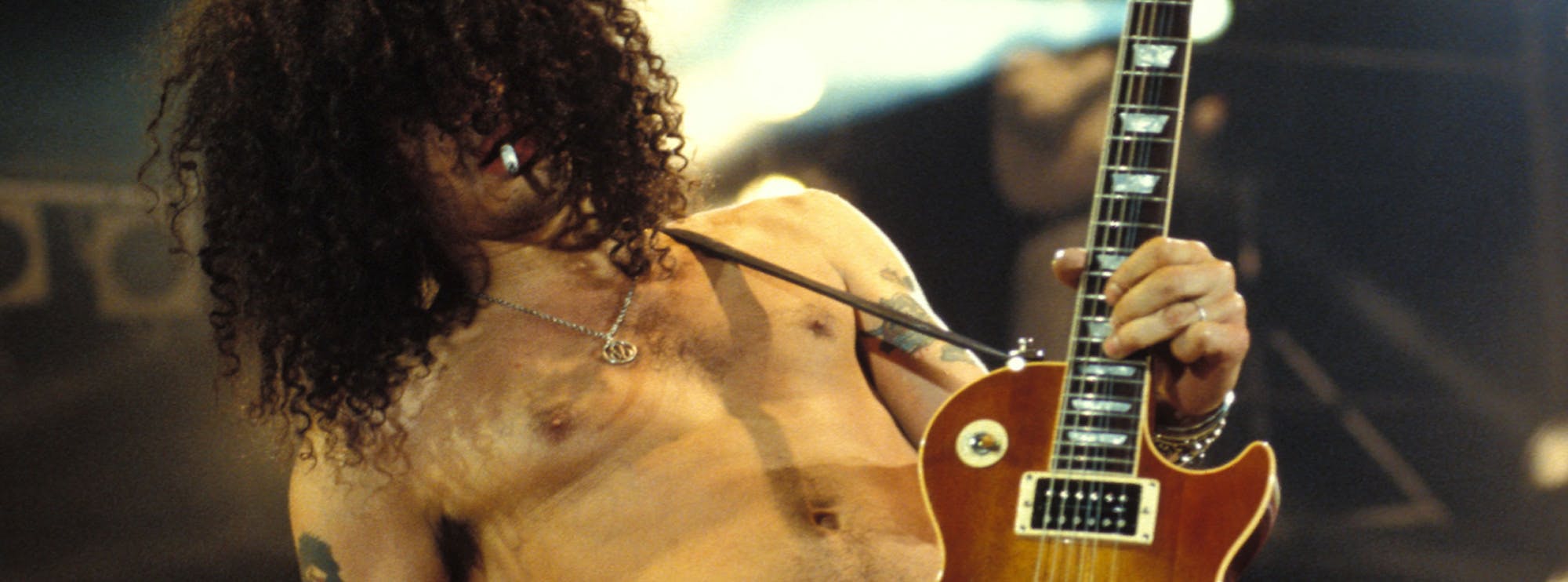Classic Albums - A Night At The Opera: A Guitarist's Perspective
Classic Albums - A Night At The Opera is the fourth studio album by the legendary British rock band Queen, released in 1975. This groundbreaking album showcases the band's creativity, technical prowess, and the genius of their lead guitarist, Brian May. With ambitious compositions and stylistic diversity, from hard rock & prog to traditional jazz and orchestral, Classic Albums - A Night At The Opera is the chance to not only learn how to play some of Queen’s best loved hits, but a journey into the heavier, darker, progressive and off-the-wall side of this legendary genre bending band.
In this Licklibrary guitar lesson course, tutor Sam Bell teaches you Brian May’s famed guitar parts and show stopping solos, taking you on a journey through one of classic rock’s most treasured albums; including Queen super hits Bohemian Rhapsody and You’re My Best Friend, plus the hard rocking Sweet Lady, the powerful Death On Two Legs and the soaring I’m In Love With My Car.
In this article, we'll delve into the intricacies of each song, focusing on guitar techniques and scales used, as well as highlighting May's invaluable contributions to the album.
Brian May: The Lead Guitarist
Before diving into the songs, it's essential to acknowledge the incredible talent of Queen's lead guitarist, Brian May. Armed with his self-built "Red Special" guitar, May's unique sound and innovative playing techniques have made him one of the most influential guitarists in rock history. He is known for his rich, multi-layered harmonies, meticulous attention to detail, and ability to blend various genres seamlessly.
Death On Two Legs (Dedicated To...)
The opening track starts with an eerie, suspenseful arpeggiated chord progression that sets the tone for the rest of the album. The song is primarily in the A minor scale and features May's aggressive riffing, alternate picking, and intricate chord progressions. The solo section displays his melodic phrasing with string bending and vibrato.
Lazing On A Sunday Afternoon
This whimsical, ragtime-inspired tune features May's finger-picking and melodic slides. The song is in the key of Bb major and showcases the band's versatility in songwriting.
I'm In Love With My Car
Driven by a powerful riff in the key of G minor, this song features May's aggressive power chords, palm muting, and syncopated rhythms. The solo is a showcase of his impeccable legato playing, unison bends, and pinched harmonics.
You're My Best Friend
This uplifting song in the key of C major highlights May's ability to create melodic, memorable guitar lines. It features a combination of finger-picking and hybrid picking, as well as tasteful use of double-stops throughout.
'39
A folk-inspired ballad in the key of A major, '39 showcases May's acoustic guitar work, employing Travis picking and capo usage. The song also features barre chords and hammer-ons, demonstrating May's diverse guitar techniques.
Sweet Lady
This hard rock track in E major displays May's intricate riffing, aggressive power chords, and palm muting. The solo features double-stop bends, unison bends, and trills, adding to the song's energetic feel.
Seaside Rendezvous
A playful, vaudevillian tune in the key of D major, Seaside Rendezvous showcases May's ability to adapt to various musical styles. The guitar work features finger-picking, slides, and double-stops, adding depth and character to the song.
The Prophet's Song
This epic, progressive rock track in A minor exhibits May's mastery of various guitar techniques. Throughout the song, you'll hear alternate picking, legato, tremolo picking, chord progressions, and arpeggios. The dynamic solo features string bending, vibrato, and harmonics, showcasing May's skill and expressiveness.
Love Of My Life
A beautiful ballad in the key of C major, Love Of My Life highlights May's delicate finger-picking and intricate chord progressions. The song also features harmonics, slides, and a subtle use of sustain to create a tender, emotive atmosphere.
Good Company
This jazz-inspired tune in Bb major showcases May's ability to mimic a Dixieland jazz band with his guitar. The song features finger-picking, slides, and double-stops, as well as a creative use of whammy bar tricks to emulate a trombone.
Bohemian Rhapsody
The iconic and genre-defying masterpiece in Bb major, Bohemian Rhapsody, is arguably one of Queen's most famous songs. It demonstrates the band's ability to blend various musical styles, such as rock, opera, and ballad, into a single cohesive piece. May's guitar work is essential in tying the song together, showcasing his diverse techniques and creativity.
The song begins with a delicate, piano-driven intro, followed by May's subtle finger-picking during the verse. As the song progresses, he employs chord progressions, barre chords, and octave melodies to build the song's intensity.
The hard rock section features May's aggressive power chords, palm muting, and a blazing solo with string bending, vibrato, tapped harmonics, and pull-offs.
The song concludes with a majestic outro, featuring May's emotive arpeggios and a final anthemic chord progression.
God Save The Queen
The album's closing track is an instrumental rendition of the British national anthem, arranged and performed by Brian May. The song showcases his ability to create rich, orchestral textures using his "Red Special" guitar and multitrack recording techniques. May employs harmonics, string bending, vibrato, and sustain to create a lush, emotional interpretation of the anthem.
A Night At The Opera is a monumental album that showcases the unparalleled musicianship of Queen and the genius of Brian May. For guitarists, it serves as an invaluable source of inspiration and a testament to the limitless potential of the instrument.
Guitar Techniques Used in the Album
Throughout Classic Albums - A Night At The Opera, Brian May employs a wide range of guitar techniques that showcase his incredible skill and versatility. Here are the techniques used in the album, with links for further exploration:
- Vibrato
- Alternate picking
- Legato
- Tapped harmonics
- Double-stop bends
- Unison bends
- Pinched harmonics
- Trills
- Tremolo picking
- Chord progressions
- Arpeggios
- Dive bombs
- Harmonics
- Pull-offs
- Power chords
- Palm muting
- Barre chords
- Two-handed tapping
- Sweep picking
- Rakes
- Capo
- Finger-picking
- Hybrid picking
- Pre-bends
- Hammer-ons
- Double-stops
- Slides
- Travis picking
- Sustain
- Pick slides
- String bending
- Syncopated rhythms
- Open-string riffs
- Whammy bar tricks
- Bluesy bends
- Octave melodies
- Galloping rhythms
- Dual guitar harmonies
- Arpeggiated chord progressions
- Chromaticism
- Altered tunings
About The Tutor
Tutor Profile
Sam Bell
Sam Bell has been playing guitar from the age of 4, since then he has played many styles from Funky Blues to screaming Metal/Fusion on 8 string guitar. A member of UK tech metal band ‘Mask of Judas’, he is also currently writing his own solo instrumental album. He also...




